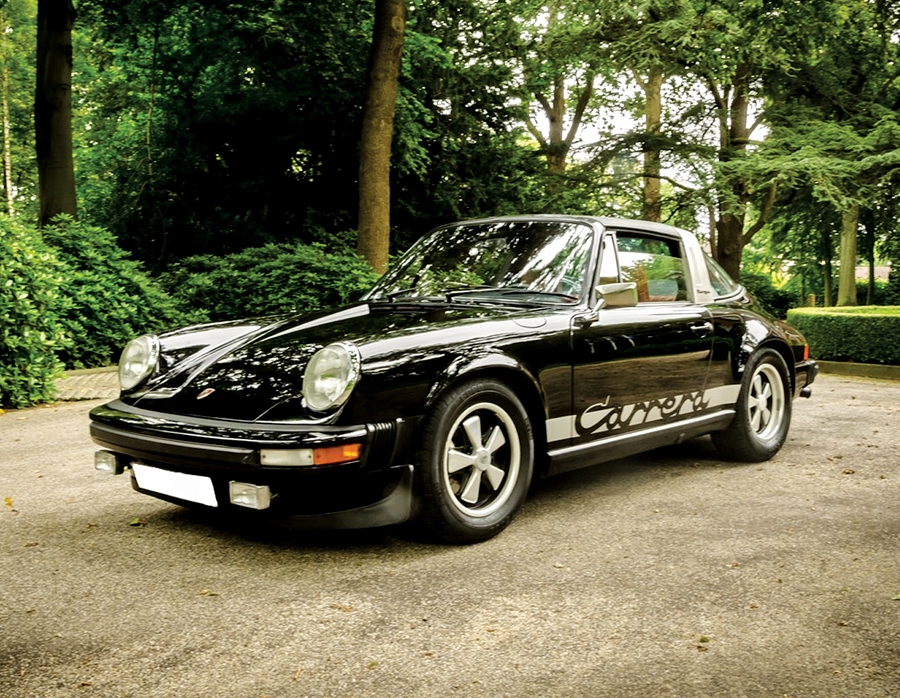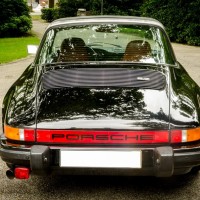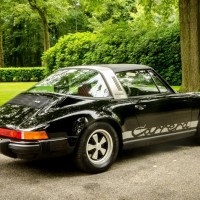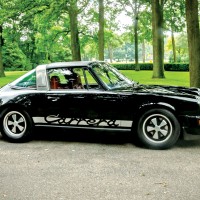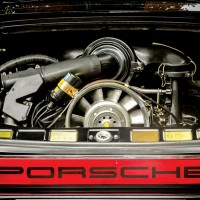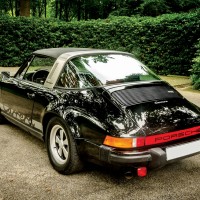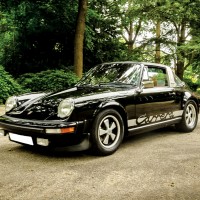SCM Analysis
Detailing
| Vehicle: | 1974 Porsche 911 Carrera 2.7 Targa |
| Years Produced: | 1974–76 |
| Number Produced: | 2,323 across three years; about 630 Targas |
| Original List Price: | Approximately DM 38,000, or $15,800 |
| SCM Valuation: | $65,000–$75,000 |
| Tune Up Cost: | $1,400–$1,500 with wires, cap and valve adjustment |
| Chassis Number Location: | On plate at front lip of trunk panel; chassis stamping above gas tank on passenger’s side |
| Engine Number Location: | On engine case boss under the fan, reading vertically, facing to the right |
| Club Info: | Porsche Club of America |
| Website: | http://www.pca.org |
| Alternatives: | 1975–77 Ferrari 308 GTB, 1974–76 Ferrari 365 GT4 BB, 1971–74 Jaguar XKE V12 |
| Investment Grade: | B |
This car, Lot 234, sold for $291,108, including buyer’s premium, at Artcurial’s Automobiles sur les Champs Auction in Paris, FRA, on November 2, 2014.
When this Porsche sold for $291,108, market observers accustomed to $40,000–$60,000 for prime G-body 911s must have wondered where in the car was “The French Connection” — the hidden stash that accounted for that result.
In fact there was one — under the rear lid. There, at the heart of the machine, lives the Type 911/83 mechanically-fuel-injected 2,687-cc, 210-horsepower engine that helped make the 1973 Carrera RS instantly legendary.
When Porsche engineers proposed a 1973 street model with specifications that included being lightweight, with an uprated engine, and with wider rear flares and wheels to be the homologation base for Porsche’s upcoming Group 4 race car, the firm’s marketing and sales department demurred strongly.
Why? Because the car would not be sold in the United States, the sales department anticipated problems selling the 500 examples required.
Enthusiasts quickly dispelled their reluctance, and Porsche sold 1,525 1973 Carrera RSs in two trim levels: 200 Porsche order code M471 “Lightweights,” stripped of non-essential interior, trim, sound deadening, and undercoating — and 1,325 M472 “Tourings” in full street regalia including optional sunroofs and air conditioning.
Along the way, at 1,000 cars produced, the RS itself qualified for Group 3 competition. The Group 4 car was, of course, the 2,806-cc RSR, built 55 strong in the same production run. It shares serial numbers with its little brother RS.
The 1973 RS is the Porsche collectible
Even today, the 1973 RS is widely considered a premier driver’s car. It is lightweight, responsive, uncomplicated, a little primal — and deeply satisfying. It is a car that is in balance — and the whole is far greater than the sum of its parts — with its specifications.
As you know, 1973 Carrera RSs have gone on to become the archetype Porsche 911 collectible, and they are now finding their way into purely investment-motivated portfolios. (No derogatory comments will be added.) Along with them, but less well known, are the even-more-valuable 1974 Carrera RS 3.0-liters, which were the almost purebred Group 3 race car for the street, built just 54 strong along with the Group 4 RSR — the ultimate normally aspirated racing 911 that was manufactured in 70 examples over three years.
The 1974 RS 3.0 was not a car for your average performance-fixated 911 enthusiast. It was expensive, raw and raucous — and not street-legal everywhere — most especially in the United States. Porsche simply did not see the need or the potential to deck it out in a streetable version similar to the 1973 RS Tourings.
Into that breach, Porsche slipped another car.
Euro Carrera — different looks, same zip
If the 1974 RS 3.0 was the spiritual successor to the 1973 RS Lightweight, then our subject car was the spiritual successor to the RS Touring.
The car has had many monikers over the years, but Carrera RS is wrong. These days, most of us refer to them as “Euro-Carreras.” The Euro Carrera was nothing more or less than the new 1974 G-body Porsche 911 with the throwback 1973 Carrera RS engine — the Type 911/83 with the same 2,687-cc displacement and 210 horsepower. In 1974, it also usually wore the carryover 1973 RS “ducktail” engine lid. (1975–76 examples usually had the flat-tray tail, and cars from all years sometimes had the standard sloping engine lid.)
Porsche built 1,456 of these cars in 1974, another 712 in 1975 and 155 in 1976 — for a total run of 2,323, of which about 630 were Targas.
As was too often the case in those years, the Euro Carreras were not importable into the United States, as Federal EPA emissions and DoT safety requirements continued to push away special, low-production models.
The 911/83 engine, like all Porsche MFI engines, was especially dirty for the era, and as a result, Porsche’s American-spec 911s all were powered with the new and oft-maligned CIS Jetronic 2.7s.
The poor man’s Carrera RS
To people in the know, the Euro Carrera quickly became the poor man’s RS. Back in the 1980s when a lot of us were using the “once-a-lifetime” exemption to bring in 1973 RS cars, a few wise people adopted Euro Carreras instead.
At a Porsche Club of America Connecticut Valley Region driver’s education event in May of 1986, 13 of us lined up our 1973 RS cars in the 25-car Instructor Run Group. Just one smart man, a banker and PCA leader in northern New Jersey, brought a Euro Carrera. He was ahead of his time.
The trick was that the Euro Carrera offered an almost identical performance and driving experience as its progenitor 1973 RS. The cars’ weights were almost identical — suspension, brakes, gearbox were all virtually the same. The Euro Carrera was 0–60 mph in under six seconds, with a top end of 148 mph.
And even in the 1980s that excitement came at substantially reduced prices in comparison with 1973 RS cars. Fast-forward to today. 1973 RS Lightweights have pushed quickly past $1m and now occasionally bring $1.5m, and Tourings are pressing upward on the seven-digit barrier.
And you, a rational-consumer enthusiast with one eye on the inflating market bubble, do not want to go that deeply into your resources. What to do? Buy a Euro Carrera.
Sure, you settle for a G-body car with its ungainly, grafted-on impact bumpers, which is one of the lesser-loved Porsche body styles, perhaps trailing only the 1999–2004 Type 996. That said, you also get a lot of performance for the money — and you get a relatively rare vintage 911. As the prices of 1973 RS cars power upward, those of Euro Carreras will most certainly follow.
The heart of the beast
Our Artcurial subject car appeared to be a relatively good example in black, with original paint and interior and trim — all well turned out. It lacked the plaid seat sections that graced many of these cars, which is a period look that collectors like today.
It was also was a Targa, the preferred body style for perhaps 10% of 911 buyers. But the heart of the beast was a Type 911/83 engine. That motor was all that was needed for the Targa to be worth five to six times the same car with the standard 1974 CIS 2.7-liter motor.
A nicely original coupe with just 11,000 km (6,835 miles) and all-original paint sold a few months ago for $325,000. That looks like a smart buy now. We think the market is correct. Euro Carreras are worth the money. ♦
(Introductory description courtesy of Artcurial.)
